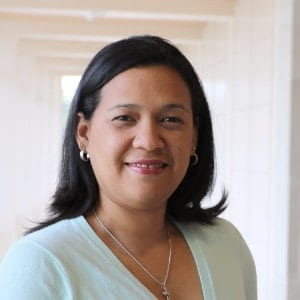
Building Trust to Enhance Preparedness: An Analysis of Community Perceptions
Johanna Amaya Leal
Assistant Professor
Department of Supply Chain Management
Iowa State University Ivy College of Business
This seminar took place on May 15, 2020, at 1:40pm PT.
View the Building Trust to Enhance Preparedness: An Analysis of Community Perceptions Webinar
Abstract
Even though communities are considered a critical responder after disasters, the subject of community perceptions and trust in response agencies have not received much attention in preparedness research. This study seeks to fill this gap by analyzing how the attitudes and perceptions of individuals in potentially disaster-impacted communities, as well as their socio-economic characteristics, can affect both the roles of trust in emergency response agencies, and risk perception in disaster preparedness.
Usually, organizations developing the necessary preparedness and response plans do not have a clear idea of citizens’ perceptions of the response system, and how these perceptions will/can influence their level of preparedness. Knowing such perceptions would allow communities to engage in the decision of what they need instead of being passive receptors of what is sent to them in case of extreme events. This interaction will positively impact the practice community and will support their effort in building local capacity.
A structural equation modeling approach is used to analyze data from a survey applied to individuals located in towns affected by two different disasters in Colombia. The results suggest that trust in response agencies is mostly influenced by previous experience in disaster situations, education, and income. However, while females have a higher risk perception, they prepare less, even after testing for mediation. Interestingly, for two individuals with the same level of education, the one with a higher income trusts more in the response system. In the same context, for two individuals with the same level of income, the one with higher education trusts less. The seminar will close with a set of recommendations for response agencies, recommendations that take into account the perceptions of the different segments of the population to be served, so that the effectiveness of preparedness efforts and overall level of preparedness of the community increases.
Bio
Dr. Amaya is an Assistant Professor in the Department of Supply Chain Management at Iowa State University Ivy College of Business. She received her B.Sc. in Industrial Engineering from Universidad del Norte, Colombia. She got a M.Sc. in Industrial and Systems Engineering, from University of Florida and completed her PhD. in Transportation Engineering at Rensselaer Polytechnic Institute (RPI). Ms. Amaya is the recipient of multiple awards, including the 2017 POMS Emerging Scholar and 2015 RPI Founders Award of Excellence. She is an Eno Fellow (2015), a FOCUS Fellow from Georgia Tech (2016), an MIT Rising Star (2015), and a Fulbright Scholar (2008). Her research interests are disaster response logistics and sustainable urban freight transportation. In the area of disaster response, she conducts fieldwork research to understand the complexity of disaster environments and the requirements impacted supply chains need to respond. She uses mathematical programming to model relief distribution while minimizing the social costs of the operations and econometric modeling to identify attributes and perceptions of individuals in disaster impacted areas. In sustainable urban freight transportation, Dr. Amaya analyzes the impacts of initiatives developed to address the issues generated by freight activity in urban areas. She works with other researchers in the field as she is an Associate Research Partner of the VREF Center of Excellence for Sustainable Urban Freight Systems. She has been part of multiple projects and panels funded by the National Science Foundation, USAID, the National Cooperative Highway Research Program (NCHRP), and the USDOT.